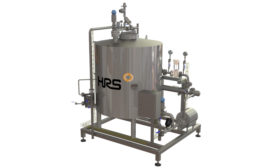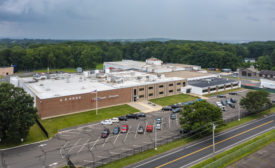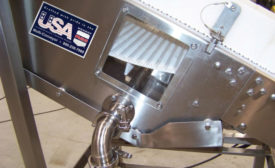Processing
The company continues to innovate in order to weather changing marketplace conditions and stay relevant with the contemporary consumer.
Read More
The advantages, disadvantages of pasture-fed cow’s milk for cheese
Creating cheese with this type of milk adds distinct notes, but it also has downsides.
October 4, 2021
Heat exchangers offer big processing paybacks
Selecting the proper heat exchanger and keeping the system operating efficiently can be challenging but fruitful.
September 29, 2021
New meets old at HP Hood’s ice cream plant
HP Hood uses the latest in technology to flavor its ice cream the old-fashioned way at its Suffield, Conn., plant.
September 28, 2021
3-A SSI announces project to revise 3-A Sanitary Standard for General Requirements
This standard defines the general requirements for sanitary equipment intended for processing milk, milk products, foods, food ingredients, beverages or other edible materials.
September 22, 2021
Is dairy a cannabis candidate?
The global cannabis food and beverage market is projected to grow at a double-digit compound annual growth rate of 15.2% between 2021-2026.
August 30, 2021
Rogue Creamery is aiming for the very best
The company’s cheese plant in Central Point, Ore., endeavors to fulfill the company’s mission of producing the “world’s finest handmade cheese.”
August 27, 2021
Rogue Creamery is making good on its mission
The company keeps service and sustainability top of mind while aiming to create the world’s finest handmade cheese.
August 25, 2021
Conveyors and palletizers: One size does not fit all dairy processors
A wide array of variables make conveyor and palletizer purchasing a tricky endeavor.
August 20, 2021
Federal child nutrition programs need common-sense changes
The dairy industry is urging policymakers to make five specific changes to ensure the nutritional benefits of dairy are more accessible to children and families participating in these programs.
August 13, 2021
Stay ahead of the curve. Unlock a dose of cutting-edge insights.
Receive our premium content directly to your inbox.
SIGN-UP TODAYCopyright ©2024. All Rights Reserved BNP Media.
Design, CMS, Hosting & Web Development :: ePublishing









.jpg?height=168&t=1630591584&width=275)
.jpg?height=168&t=1629827716&width=275)


